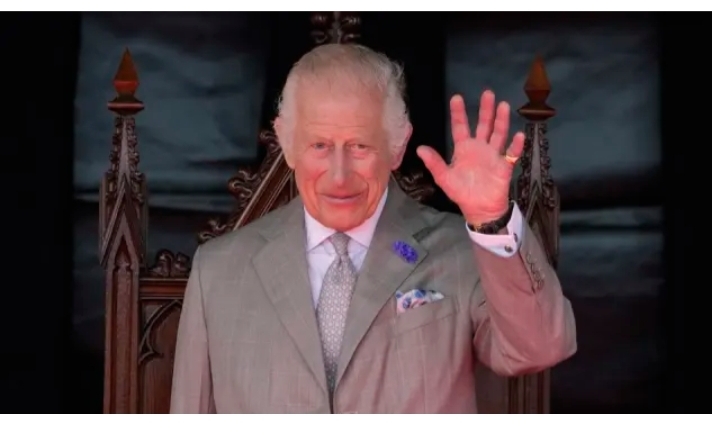CELEBRITY
The British monarchy steps up efforts to go green with solar panels on palaces and biofuel-powered Bentleys

King Charles III was a champion of environmental causes long before he ascended to the British throne. And, fittingly, in the first full year of his reign, the British monarchy introduced a slew of measures to tackle its rising carbon emissions.
According to the Royal Household’s latest accounts, published Wednesday, work has started on refurbishing the gas-powered lanterns at Buckingham Palace so they run on electricity, while Windsor Castle — where Prince Harry and Meghan wed in 2018 — has had solar panels fitted on its roof for the first time.
The King’s two Bentleys will also be modified within the next year to run on biofuel, according to Britain’s PA Media. The Royal Household aims to transition to an “almost fully electric” fleet of vehicles eventually, the accounts said, without providing a target date.
Whether biofuels used for vehicles reduce carbon emissions is contentious and depends on many factors, including their source. Some studies show that growing crops for fuel can emit more carbon than running a car on gasoline.
According to the accounts, which cover the financial year ending March 31, the Royal Household will also partly use sustainable aviation fuel (SAF) for two new helicopters. The helicopters will allow the royal family to carry out their engagements in “remote regions of the UK that are not otherwise readily served” by other forms of transport.
SAF has a lower carbon footprint than fossil fuels because it’s made from waste products, where the carbon has already been emitted, or from plants that absorb carbon dioxide as they grow.
The long list of Charles’ environmental efforts over the years includes a proposal to install around 2,000 solar panels in the grounds of Sandringham Estate.
It’s an ambitious plan, which, if implemented, will produce enough power to meet the “current and predicted future electricity demands” of the 20,000-acre royal residence, according to the proposal submitted by a planning agent on behalf of Sandringham Estate in April.
Sandringham has been the private home of four generations of British monarchs since 1862. It is also where the royal family traditionally gathers to celebrate Christmas.
The Royal Household has its work cut out on reducing pollution: the accounts released Wednesday showed that its overall carbon emissions rose 4% in the 2023-24 financial year to 5,994 tonnes (6,607 tons). That’s the equivalent of running more than 780 average homes in the United States.
Separately, the accounts showed that the amount the monarchy received from British taxpayers — known as the Sovereign Grant — totaled £86.3 million ($111 million) for 2023-24, the same as the previous financial year. Most of this money is spent on maintaining the royal family’s properties and paying its staff.
Under an arrangement dating back to 1760, the monarch hands over all profits from the Crown Estate — which includes vast swathes of central London property as well as the seabed around England, Wales and Northern Ireland — to the UK government in return for the Sovereign Grant.
Crown Estate profits soared in the 2023-24 financial year to a record £1.1 billion ($1.4 billion), boosted by revenue from offshore wind projects.
Angela Dewan contributed to this article.
For more CNN news and newsletters create an account at CNN.com











